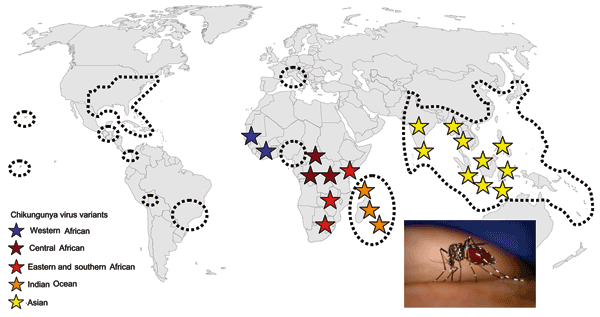Volume 12, Number 10—October 2006
Research
Novel Chikungunya Virus Variant in Travelers Returning from Indian Ocean Islands
Figure 4

Figure 4. Estimated global distribution of Aedes albopictus (areas enclosed in dotted lines) and distribution of chikungunya virus (stars) from western Africa to southeastern Asia, including the Indian Ocean variant responsible for the 2006 outbreak. The color of the stars reflects the main evolutionary lineages shown in Figure 3. Ae. albopictus photograph courtesy of James Gathany, Centers for Disease Control and Prevention.
1These authors contributed equally to this study.
Page created: November 10, 2011
Page updated: November 10, 2011
Page reviewed: November 10, 2011
The conclusions, findings, and opinions expressed by authors contributing to this journal do not necessarily reflect the official position of the U.S. Department of Health and Human Services, the Public Health Service, the Centers for Disease Control and Prevention, or the authors' affiliated institutions. Use of trade names is for identification only and does not imply endorsement by any of the groups named above.